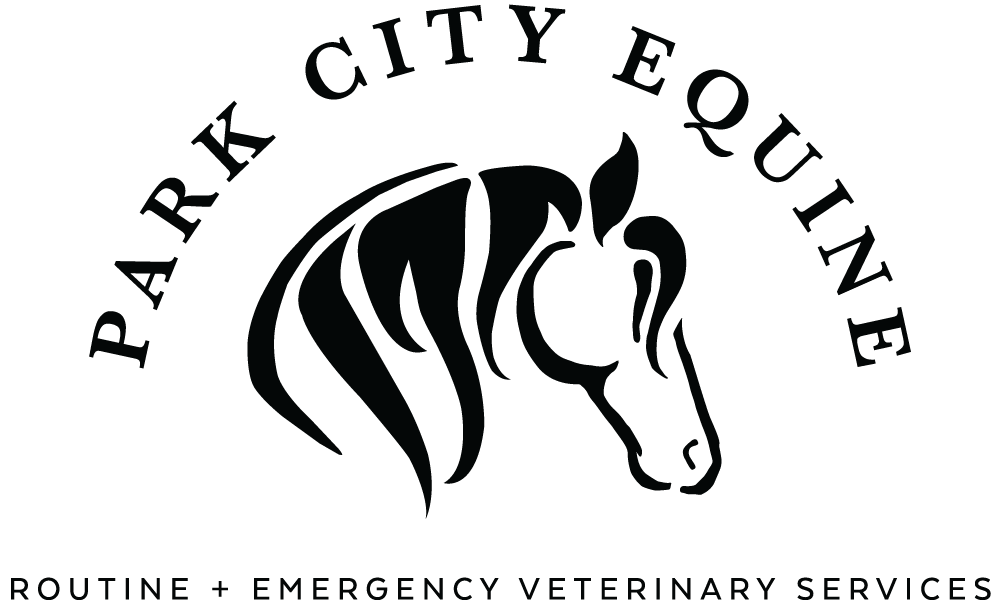Limb Conditions
Several disorders can affect the hindlimbs, forelimbs or hooves of horses. Some of these can lead to lameness or changes in gait.
Hindlimb Conditions in Horses
Stringhalt is a condition that causes the horse to jerk or hop, with the hind legs pulled up high before taking the next step. This results from over-flexing of one or both back legs. The exact cause is unknown. It may be related to problems with the nerves in the hind legs or the ingestion of toxic plants.
Bog spavin is a swelling (distention) on the inside of the front part of the hock. It is caused by inflammation in the joint capsule (synovial membrane). It can result from poor conformation in the joint, which usually affects both hind limbs. If only one limb is affected, the condition may be caused by a sprain or another problem with the joint.
Bone spavin occurs when one or more bones in the hock becomes inflamed (i.e., osteoarthritis or osteitis). As a result, the joint formed by the bones of the hock can no longer move freely. This leads to an irregular gait. Bone spavin may be caused by nutritional deficiencies, conformational problems or joint stress (such as during quick stops or traumatic events).
Thoroughpin is a soft enlargement filled with fluid that appears on the outside and inside of the hock. It can vary in size and usually occurs on only one hindlimb. It is caused by some kind of trauma, but may not lead to any lameness or pain.
Capped hock is a swelling of the bursa (bursitis), a fluid-filled sac in the hock that allows the bone and tendon to glide smoothly. This condition is fairly common and is often caused by trauma, such as kicks or fall, lying on hard floors with poor bedding or bumping the hocks against the stall or trailer.
A curb is an enlargement behind the cannon bone, just below the hock. It occurs when the plantar ligament on the back of the hock becomes inflamed and eventually thickens. This can occur after the horse has fallen, jumped, slipped or pulled.
Forelimb Conditions in Horses
Bucked shins is a common name for very small fractures (microfractures) on the front part of the cannon bones. This causes pain in the front of the cannon bone upon touch, swelling and lameness. This condition is common among 2- to 3-year old racehorses.
Suspensory ligament injuries are common in both the hindlimbs and forelimbs of horses. This is one of several ligaments and tendons on the back of the leg that support the bones in the lower leg. Injuries can occur at different points along the suspensory ligament.
Splints involve a bony growth between the cannon bone and the splint bones on either side. They can start as a tear in the ligament that runs between the cannon and splint bones. They may also result from external injury to the bone or after the healing of a fracture in that area.
Tendon injuries can occur in the hindlimb, forelimb and hoof. Some injuries will cause an enlargement of the tendon (“bowed”), with pain and heat in the area and lameness. Other tendon injuries, though, may not have any symptoms initially.
Hoof Conditions in Horses
Hoof cracks include blowout and horizontal cracks. These are caused by a blow to the wall of the hoof or an injury to the coronary band. They do not usually result in lameness. Grass cracks can appear in horses that are not wearing horseshoes. Sand cracks are caused by white line disease at the coronary band or an injury to the coronary band. These may cause lameness.
Thrush is a bacterial infection that occurs around the frog. It produces a black and strong-smelling leakage from the area. It is usually related to keeping horses in wet, dirty conditions.
A hot nail is a horseshoe nail that has been driven into a sensitive part of the wall of the hoof. This will often result in lameness. A street nail is any foreign object that has been driven into the foot. This requires immediate medical attention.
Laminitis is an inflammation of the sensitive laminae. The laminae connect the coffin bone to the hoof wall. If severe enough, the coffin bone may rotate and puncture the sole.
Navicular is a chronic (ongoing) condition that involves the navicular bones. It is a common cause of forelimb lameness in the athletic horses. It can be caused by faulty conformation, imbalance in the hoof, exercise on hard surfaces or a genetic predisposition.
If your horse is exhibiting symptoms relating to any of his or her limbs, contact us for an appointment, so we can examine your horse and provide appropriate treatment options.

